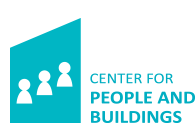Tomorrow's offices through today's eyes: Effects of innovation in the working environment
December 2001 | Paul Vos, Theo van der Voordt
Many organisations have changed to new ways of working, steered or followed up by design interventions and sharing of activity-related workplaces. Expectations have been high. Innovative offices should lead to more efficient use of space and other facilities; greater job satisfaction; the projection of a positive image to clients; an improved performance of the organisation and its staff; and reduced costs. Have innovations in the working environment fulfilled these high expectations? Are the new offices really more efficient and more pleasant to work in? Or will constant changing of the workplace reduce satisfaction and productivity? What are the ‘pros’ and ‘cons’ of teleworking? Are the extra costs of nice ergonomic furniture, high-tech information and communication technology (ICT) and image-boosting gadgets counterbalanced by the expected profits in higher productivity and more efficient use of space?
Evaluative research results show a mixed picture. Besides the considerable satisfaction with the attractive design and the improved opportunities to interact, there are many complaints about problems in concentrating on work. Psychological mechanisms, such as the need for status, privacy and individual territory, do not necessarily hinder ‘flexi-working’, but only when the new situation provides considerable added value. Teleworking offers more freedom of choice, but there are attendant risks.
In: Journal of Corporate Real Estate, vol 4 no 1.
